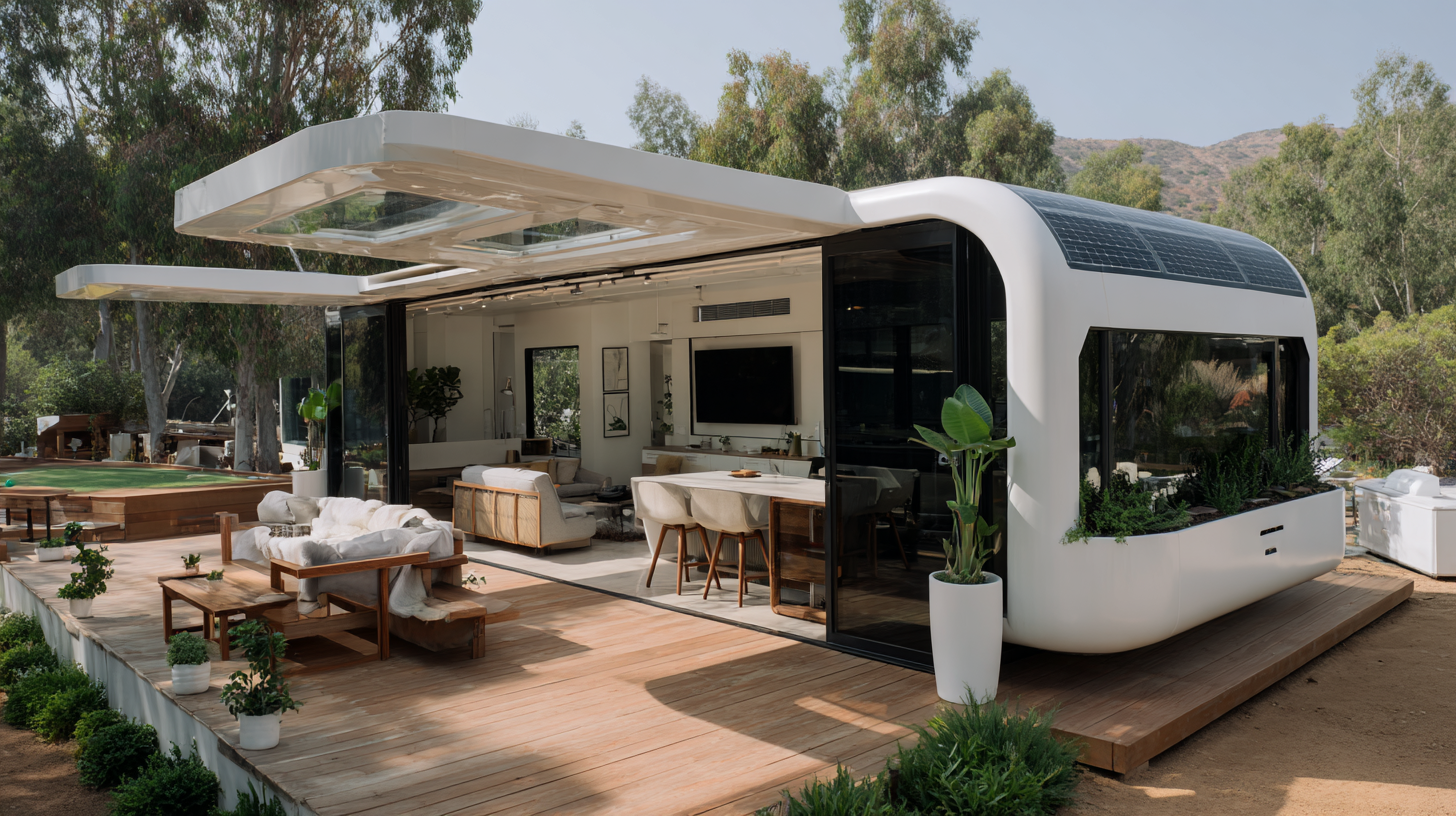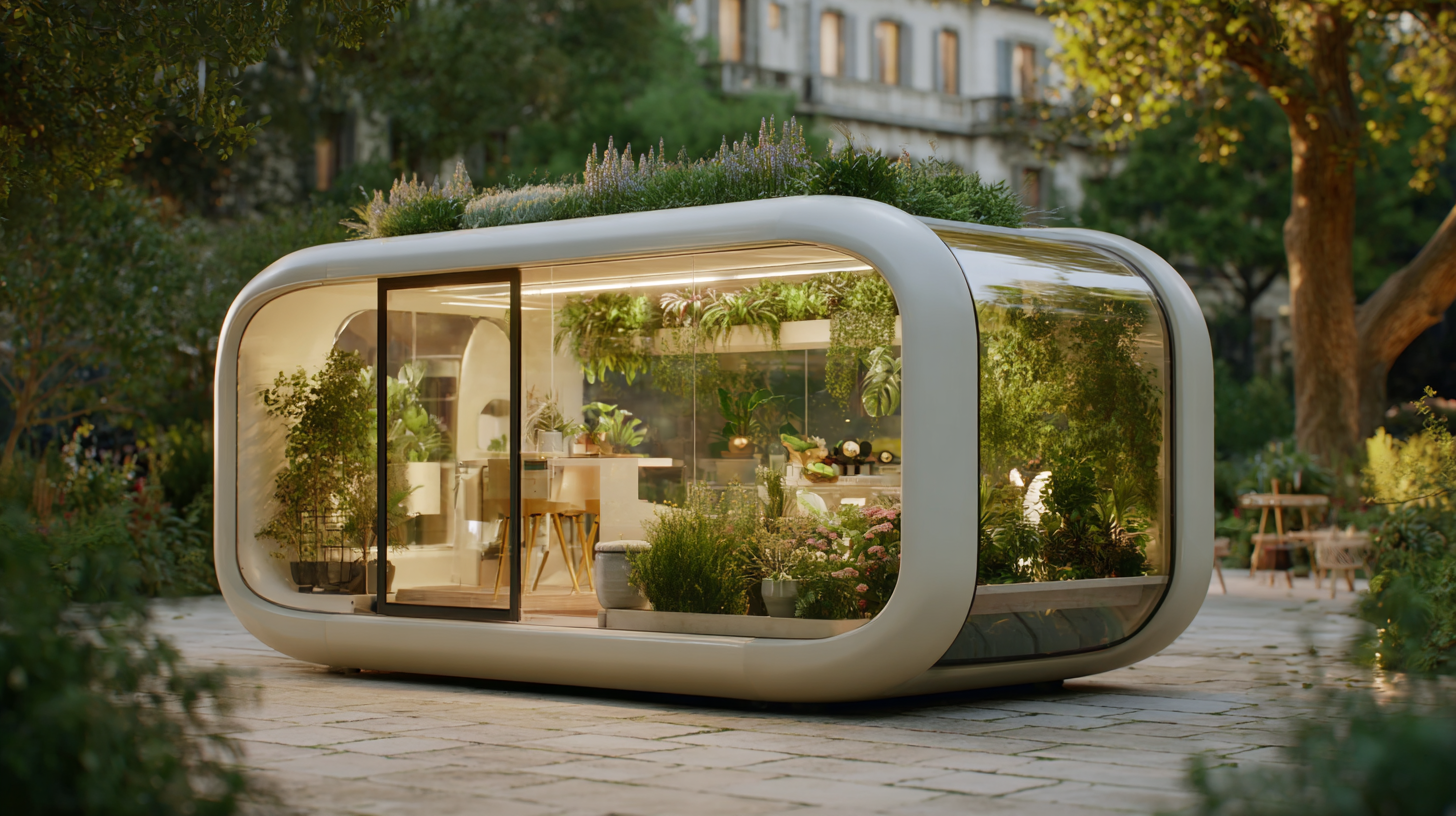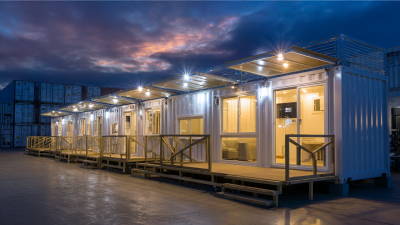As urbanization accelerates and environmental concerns mount, the demand for innovative housing solutions has never been more pressing. The "Capsule Home" concept exemplifies the future of sustainable living by merging minimalist design with eco-friendly practices. According to a report by the World Economic Forum, the global population is projected to reach 9.7 billion by 2050, necessitating a significant shift in how we approach housing. Capsule Homes, with their efficient use of space and resources, not only cater to this growing population but also emphasize sustainability—utilizing smart technology and renewable materials. A study from the United Nations suggests that sustainable housing can reduce carbon footprints by up to 50%, highlighting how Capsule Homes could revolutionize our living environments while addressing the critical issue of climate change. Embracing this innovative housing model paves the way for a greener future, making Capsule Homes an essential topic in the discourse on sustainable living.

As urban populations continue to swell, the demand for innovative housing solutions becomes increasingly critical. Capsule homes are emerging as a forward-thinking response to these challenges, particularly in densely populated cities like Singapore. The recent unveiling of Singapore’s first multi-storey 3D-printed home signifies a monumental shift in architectural design, characterized by sustainability and efficiency. This revolutionary structure showcases how advanced building technologies can transform urban living, allowing for the construction of eco-friendly spaces that minimize resource consumption while maximizing living areas.
Further enhancing the potential of sustainable living, innovations such as artificial leaf technology are poised to reshape energy production within urban environments. By mimicking natural photosynthesis, these artificial leaves can generate renewable energy, providing clean power to homes and reducing reliance on fossil fuels. According to recent industry studies, integrating such technologies into capsule homes might lower energy consumption by up to 30%, significantly contributing to urban sustainability goals. As cities explore these innovative housing solutions, the role of capsule homes becomes crucial in fostering a greener, more sustainable future for urban living.
In the quest for sustainable living, Capsule Home Innovations stands out by seamlessly integrating advanced technology with eco-friendly architecture. These homes are designed with smart features that not only enhance the living experience but also significantly reduce the environmental footprint. For instance, energy-efficient systems such as solar panels, smart thermostats, and automated lighting are carefully incorporated, allowing residents to optimize energy consumption while maintaining comfort.
Moreover, the architectural design of Capsule Homes emphasizes sustainability through the use of recycled and environmentally friendly materials. The layout maximizes natural light and ventilation, which minimizes reliance on artificial heating and cooling systems. This thoughtful approach not only lowers energy costs but also promotes a healthier living environment. By merging cutting-edge technology with sustainable practices, Capsule Home Innovations represents a forward-thinking solution for those looking to embrace a greener lifestyle without compromising on modern conveniences.
This chart illustrates the integration of smart technology in eco-friendly architecture, highlighting the various sustainable features adopted in modern capsule homes. The data represents the percentage of homes that utilize each smart feature, emphasizing the trend towards sustainable living solutions.
The concept of capsule homes represents a remarkable shift in modern living, emphasizing space efficiency and sustainability. With urbanization on the rise, innovative solutions in capsule home design are essential in accommodating the growing population while reducing environmental impact. These compact living spaces are ingeniously crafted to maximize utility without sacrificing comfort, making them ideal for city dwellers and eco-conscious individuals alike.

One of the standout features of capsule homes is their multifaceted furniture designs that serve multiple functions. For example, a single unit may incorporate a bed that folds into the wall, revealing a workspace underneath or transforming into a dining area. Additionally, modular storage solutions allow residents to maintain a clutter-free environment by cleverly utilizing vertical space. The design ethos behind capsule homes prioritizes not only efficient use of space but also an aesthetic appeal that creates a warm and inviting atmosphere, proving that sustainable living can also be stylish.
Capsule homes represent a revolutionary approach to sustainable living, fostering not only individual well-being but also strengthening community bonds. As urban areas grapple with the challenges of climate change, innovative housing solutions like capsule homes offer affordable, efficient options that can significantly reduce the carbon footprint. This aligns with findings from various sustainability reports indicating that compact living spaces can enhance urban resilience, providing a blueprint for communities aiming for sustainability.
Implementing capsule home designs can promote a sense of community among residents. Research shows that shared spaces enhance social interactions, which are crucial for building engaged neighborhoods. Additionally, eco-friendly practices, such as utilizing responsible sourcing for building materials, support local economies and contribute to stronger community ties.
**Tips for Sustainable Living**:
- Consider co-housing arrangements to share resources and lower living costs.
- Explore local initiatives aimed at promoting sustainability in your neighborhood.
- Advocate for policies that support the development of sustainable housing projects to ensure a healthier urban environment.

The evolution of capsule homes represents a significant shift in sustainable living practices, offering innovative solutions to contemporary housing challenges. Unlike traditional homes, capsule concepts are typically compact, efficiently utilizing space while minimizing their environmental footprints. Constructed with eco-friendly materials and designed for energy efficiency, these homes embody a lifestyle that prioritizes sustainability without sacrificing comfort. Their compact size encourages minimalist living, reducing consumption and waste while fostering a renewed appreciation for shared spaces and community-oriented designs.
Future trends indicate that capsule homes will continue to evolve with advanced technologies, such as smart home systems that optimize energy use and support sustainable practices. Innovations in modular construction will make these homes more accessible, allowing for easier assembly and transportation. As urban areas face increasing density, capsule homes present a viable solution by offering versatile living arrangements that cater to diverse populations, from young professionals to aging communities. The integration of green spaces and urban farming into capsule designs further enhances their appeal, making them a cornerstone for future sustainable living initiatives.






